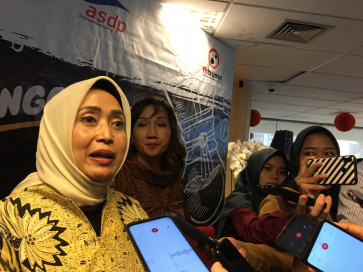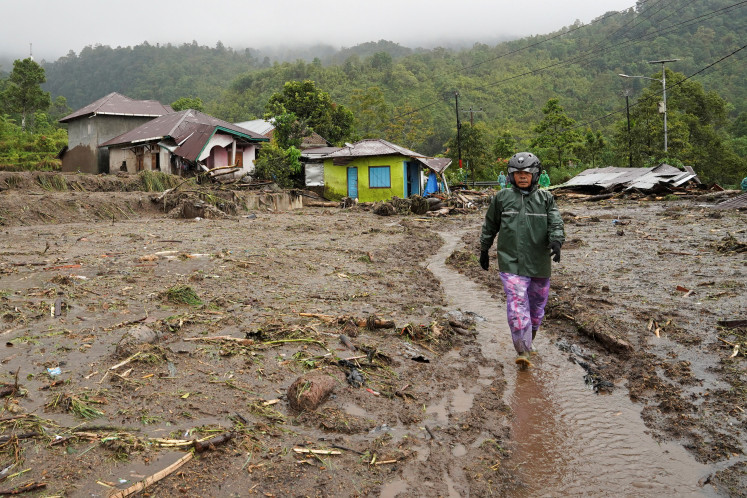Popular Reads
Top Results
Can't find what you're looking for?
View all search resultsPopular Reads
Top Results
Can't find what you're looking for?
View all search resultsDevelopment of RI’s biggest power plant stymied
The government has intensified its supervision of the construction of the country’s biggest power plant after the emergence of several obstacles related to land acquisition and legal action
Change text size
Gift Premium Articles
to Anyone
T
he government has intensified its supervision of the construction of the country’s biggest power plant after the emergence of several obstacles related to land acquisition and legal action.
Coordinating Economic Minister Hatta Rajasa said on Wednesday that the government would form a team to help clear the logjams constraining the planned 2,000 -megawatt (MW) coal-fired Batang plant in Batang regency in Central Java.
“We are upbeat the team can help the local administrations to ensure that all land-acquisition issues and other problems are resolved by October,” said Hatta after holding a meeting to discuss the problem.
Attending the meeting were Central Java Governor Bibit Waluyo, PT PLN president director Nur Pamudji and Deputy Energy and Mineral Resources Minister Rudi Rubiandini.
The much-anticipated US$4 billion power plant project is being jointly developed by publicly listed PT Adaro Energy, Indonesia’s second biggest coal producer after PT Bumi Resources and Japan-based Electric Power Development (J-Power) and Itochu Corp. The companies have formed PT Bhimasena Power Indonesia to develop the project.
The financial arrangement between the companies and banks are expected to be completed in October this year, according to PLN’s Nur.
“It usually needs at least four years to complete the construction of a power plant, and thus we hope it can begin commercial operations in 2017,” he said.
The Batang plant will occupy a site of between 250 and 350 hectares and employ 2,800 workers.
According to Nur, this will make it the biggest power plant in Indonesia, surpassing the Paiton plant in East Java. The Batang plant is also expected to be one of the largest plants in Southeast Asia.
Electric power from the plant is expected to be distributed to Java and Bali where electricity consumption can reach up to 20,500 MW at peak times.
State-owned power company PLN will purchase electricity from the plant at 5.71 US cents per kilowatt-hour (kwh), according to Nur.
PLN initially expected the plant to be completed in 2016 on assumption that land-acquisition and permit issues would be settled in October last year. However, problems have emerged that have resulted in putting construction on hold.
Many of the country’s major infrastructure projects have run into the sand due to protracted land acquisition processes. Landowners have regularly held out, refusing to sell their land unless investors pay considerably inflated prices. Aside from land issues, the Batang plant has been plagued by legal
uncertainties.
The Batang administration is currently facing a lawsuit filed by villagers living near the planned plant site. The villagers oppose the construction as they claim it could harm the surrounding environment.
The case is currently being heard at the state administrative court (PTUN).
The planned project has also drawn protests from several NGOs, including the Pantura Alliance, Greenpeace and North Jepara fishermen’s forum. They have all called for the project to be canceled.
In response to the lawsuit, governor Bibit said that in addition to assistance from the central government, his administration had also requested for the Attorney General’s Office (AGO) to assist it in the case.
“I have instructed the Batang regent Yoyok Riyo Sudibyo to quickly publish access permits to the planned plant’s location. We will also start promoting the project publicly,” he said.











